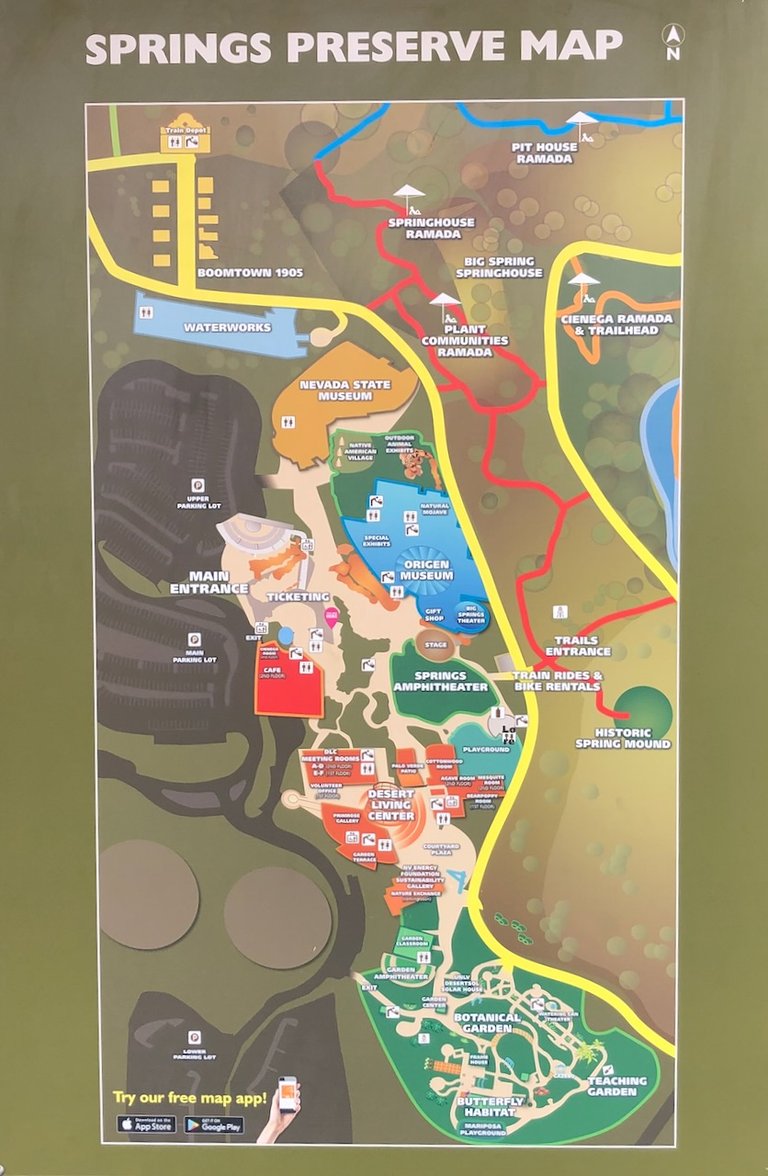Every city has to start somewhere. Las Vegas started at the Springs Preserve. Wikipedia tells us,
The Las Vegas Springs or Big Springs is the site of a natural oasis, known traditionally as a cienega. For more than 15,000 years, springs broke through the desert floor, creating grassy meadows (called las vegas by Mexican explorers). The bubbling springs were a source of water for Native Americans living here at least 5,000 years ago. Known as The Birthplace of Las Vegas it sustained travelers of the Old Spanish Trail and Mormons who came to settle the West. The springs' source is the Las Vegas aquifer.
Wikipedia also tells us that the springs stopped bubbling to the surface in 1962 as the water table dropped. It was listed on the National Register of Historic Places in 1978, and since 2007 it has been open to the public as a 180-acre cultural insitution. As the Springs Preserve website explains,
The Preserve features museums, galleries, outdoor events, a colorful botanical garden and an interpretive trail system through a scenic wetland habitat.
Here is a map of the campus.

I'd like to say we hiked the 3 1/2 miles of interpretive trails, but we spent pretty much all of our time at the Origen Museum. Not a misspelling of "origin," the word "origen" was derived from the words "original" and "generations". The museum focuses on the history of the land comprising the Las Vegas Springs and the surrounding basin. They also had a rather interesting traveling exhibit on cats and dogs when we visited.
Here are some other displays we enjoyed and learned from at the Origen.
- Miracle in the Mojave movie in the Big Springs Theater. Did you know that the Clark County basin was once a shallow ocean?
- The 1905 land auction which laid the foundations for the growth of Las Vegas.
- The role of the Union Pacific railroad in its development. The presence of water and its location roughly halfway between Salt Lake City and Los Angeles made it a convenient way station.
- Dwellings and customs of the Paiute Indians who occupied the land.
- A few live animals, including desert frogs, lizards, and foxes.
- A brief film about the Hoover Dam.
There is so much more to the Springs Preserve – Botanical Garden; Nevada State Museum; Butterfly Habitat; Boomtown 1905; WaterWorks; Sustainability Gallery & Nature Exchange; Trails & Train Rides; and more – that multiple visits would be necessary to take it all in.
Among other attractions, the Nevada Department of Tourism and Cultural Affairs maintains one of its seven State Museums on the Springs Preserve campus.
